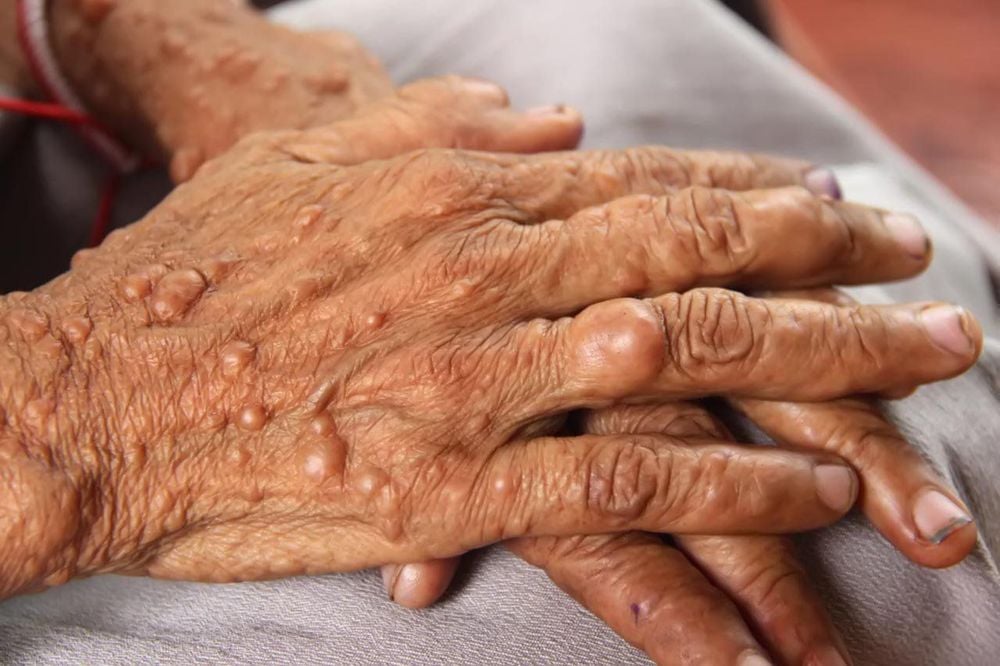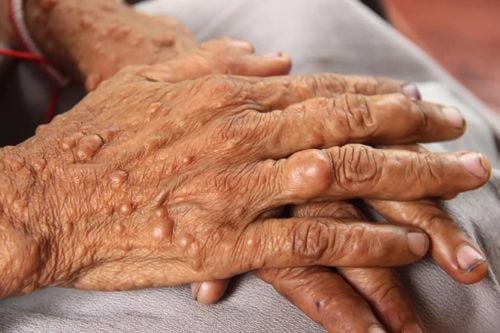This is an automatically translated article.
Neurofibromatosis is a rare disease, most of the cases are benign, not life-threatening, but in some cases of malignant neurofibromatosis, the fibrous tumor location in organs important, causing serious or life-threatening complications1. Signs of neurofibromatosis in the brain
Neurofibromatosis in the brain, whether benign or malignant, compresses the brain causing dangerous signs. CT or MRI scans help diagnose the location of fibroids.Signs of malignant neurofibroma formation in the brain include:
Headache Headache is a common symptom, which can be seen in about half of people with brain tumor, pain can be severe serious. Headache is often more in the early morning or early morning, the pain is persistent, repeats daily, the degree of which increases in intensity and duration. In young children who can't talk yet, the signs of headaches can be expressed through refusing to eat, crying, sleeping less, and struggling.
Vomiting and Nausea Due to increased intracranial pressure, patients with brain tumors often have vomiting, nausea accompanied by headache symptoms, often vomiting in the morning and not related to eating, after each time. Vomiting patients are often more tired, less headache. Patients vomiting a lot can lead to dehydration, electrolyte disturbances.
Vision loss Blurred, severe eyes may not be able to see. Decreased visual field of the eye, paralysis of the oculomotor nerve causes strabismus in case of sixth nerve palsy, external strabismus if IV nerve palsy, eye protrusion, color perception disorder. These are the signs that can be seen when a malignant neurofibromatosis presses on the optic nerve.

Dù lành tính hay u xơ thần kinh ác tính đều gây chèn ép não gây ra các dấu hiệu nguy hiểm
Behavioral Disorders In infants and young children, there may be signs of hyperactivity and behavioral disturbances that need attention to be observed.
Loss of action control Due to compression on the cerebellum or the vestibular cochlear nerve, affecting the motor coordination function, the patient staggers easily to fall, the ability to coordinate movements is poor.
Prolonged stress. Expression of irritability, fatigue, irritability, poor concentration, sleeping a lot or always in a sleepy state.
Weakness and numbness Hands and feet movement is weak, difficult to walk or sometimes can't move. Sensory disturbances such as numbness, tingling sensation in hands and feet. Paralysis, sensory disturbances often tend to be on one side of the body. Paralysis may be accompanied by language disturbances, vision disturbances, consciousness disturbances, decreased concentration, and sleep disturbances.
Epilepsy Malignant neurofibromatosis in the brain can press on brain nerve cells, altering the electrical signals in the brain, causing seizures. About 50% of people with brain tumors experience at least one seizure. However, epilepsy is not only caused by tumors in the brain, there are many other causes of epilepsy such as vascular malformations, after head trauma...
Growth retardation In children with brain tumors May cause signs of developmental delay including motor, mental, and intellectual retardation. Affect the development and learning ability of children.

Rối loạn cảm giác như tê bì, cảm giác kiến bò ở bàn tay, bàn chân khi bị u xơ thần kinh ác tính
2. Signs of malignant neurofibromatosis in the spinal cord
In case there is a malignant neurofibromatosis in the spinal cord, the patient will have some signs such as:Spinal deformity: The large tumor pushes the spine, causing deformity, possibly scoliosis. Causes paralysis, sensory disturbances: Can cause paralysis of 2 legs or extremities, accompanied by a feeling of numbness, ants crawling in the limbs. In addition, the case of malignant fibroids in children also increases the risk of leukemia, which can manifest as frequent bacterial infections, bleeding under the skin or mucous membranes and anemia (blue skin, mucous membranes). pale skin, fatigue...)
When you notice signs of neurofibromatosis, you need to go to a medical facility soon for diagnosis and treatment. If the fibroid location is operable, it is necessary to have surgery to remove the neurofibromatosis tumor to relieve the compression or sometimes it must be treated with radiation therapy, chemotherapy to reduce the size of the tumor. It is important to observe early detection of abnormal symptoms, thereby receiving early treatment to reduce the risk of serious complications.
If you have unusual symptoms, you should be examined and consulted with a specialist.
Please dial HOTLINE for more information or register for an appointment HERE. Download MyVinmec app to make appointments faster and to manage your bookings easily.
MORE:
Symptoms of mild depression Signs and features of brain tumors Warning symptoms of brain tumors & treatment












